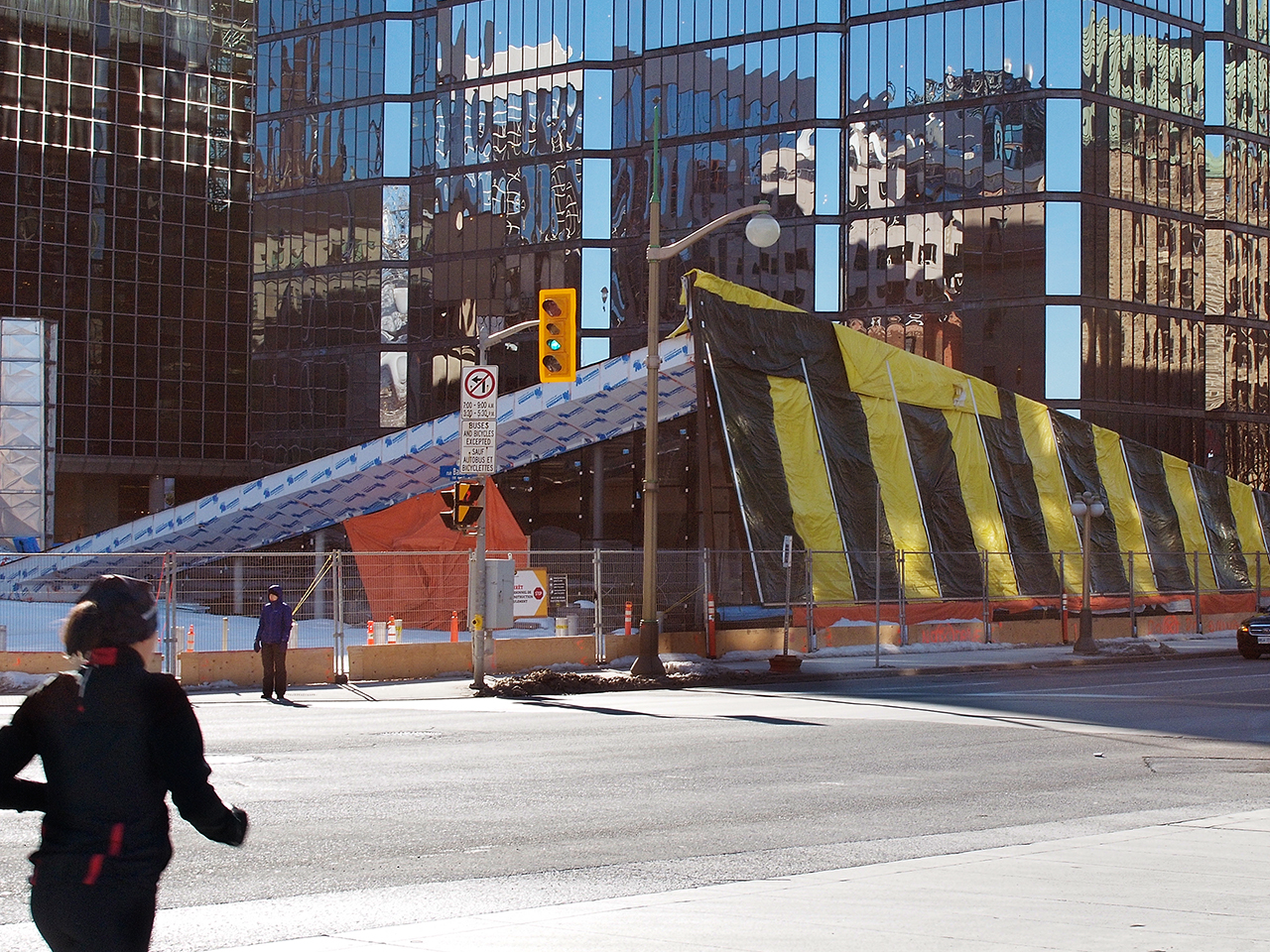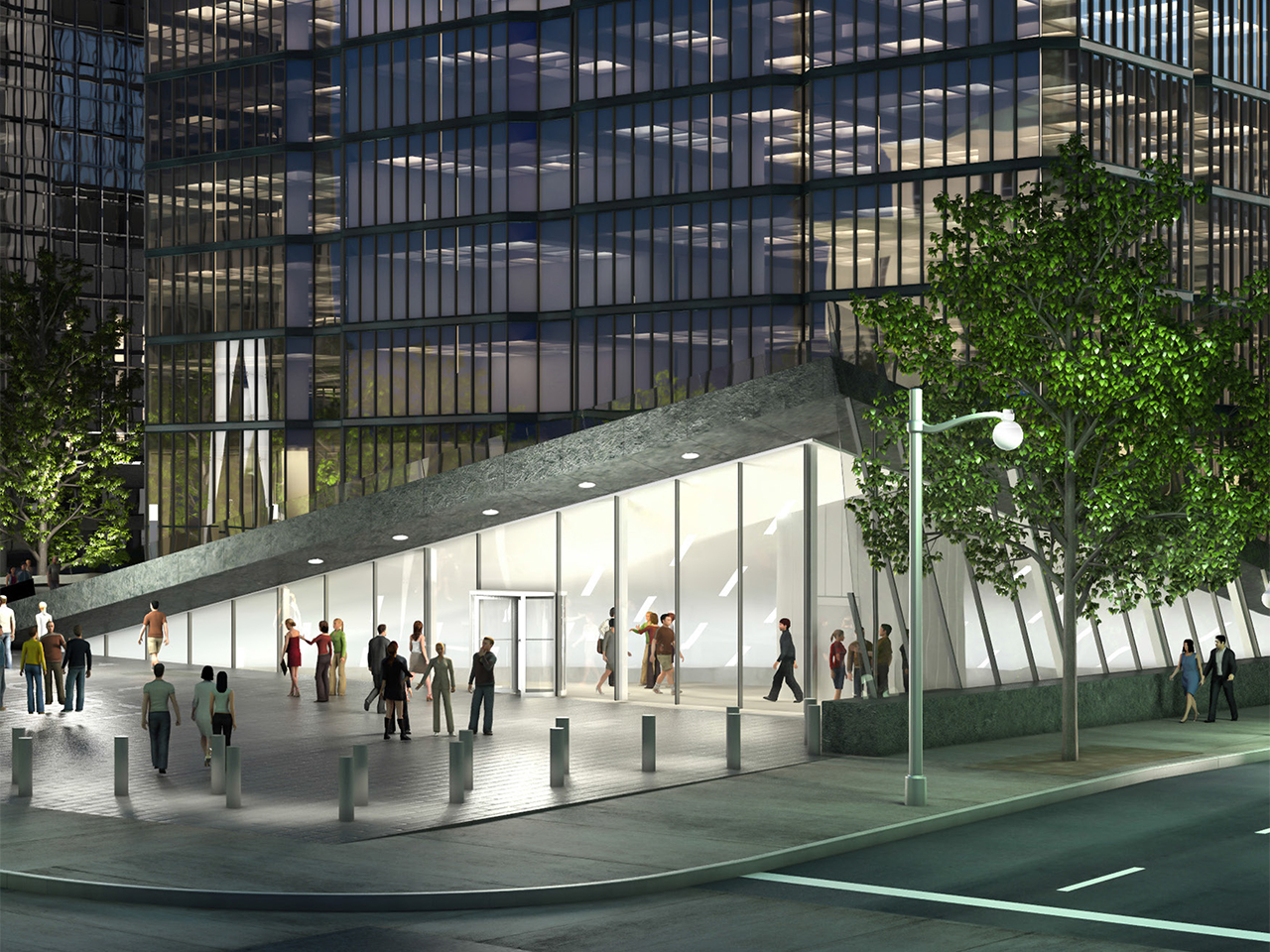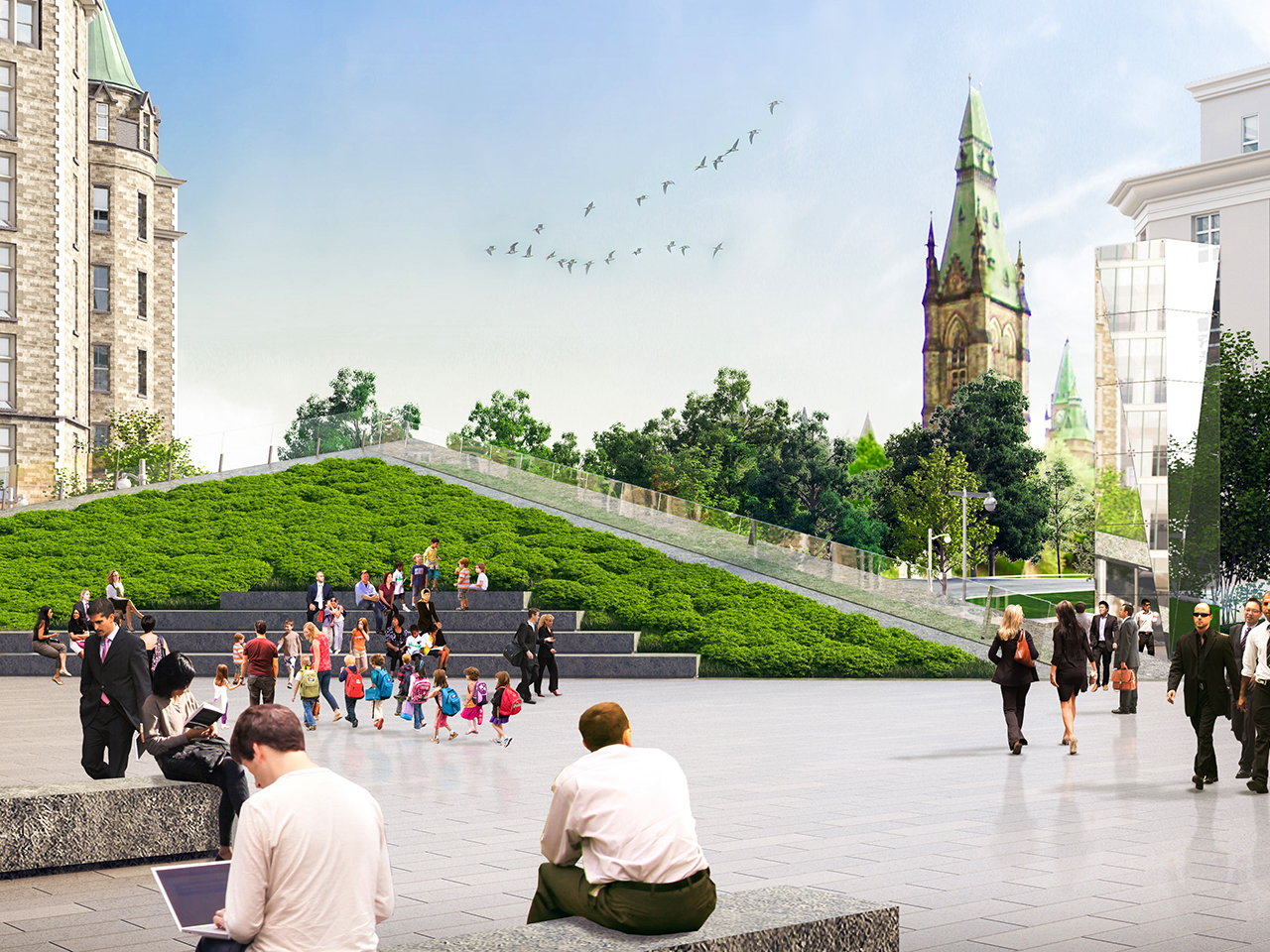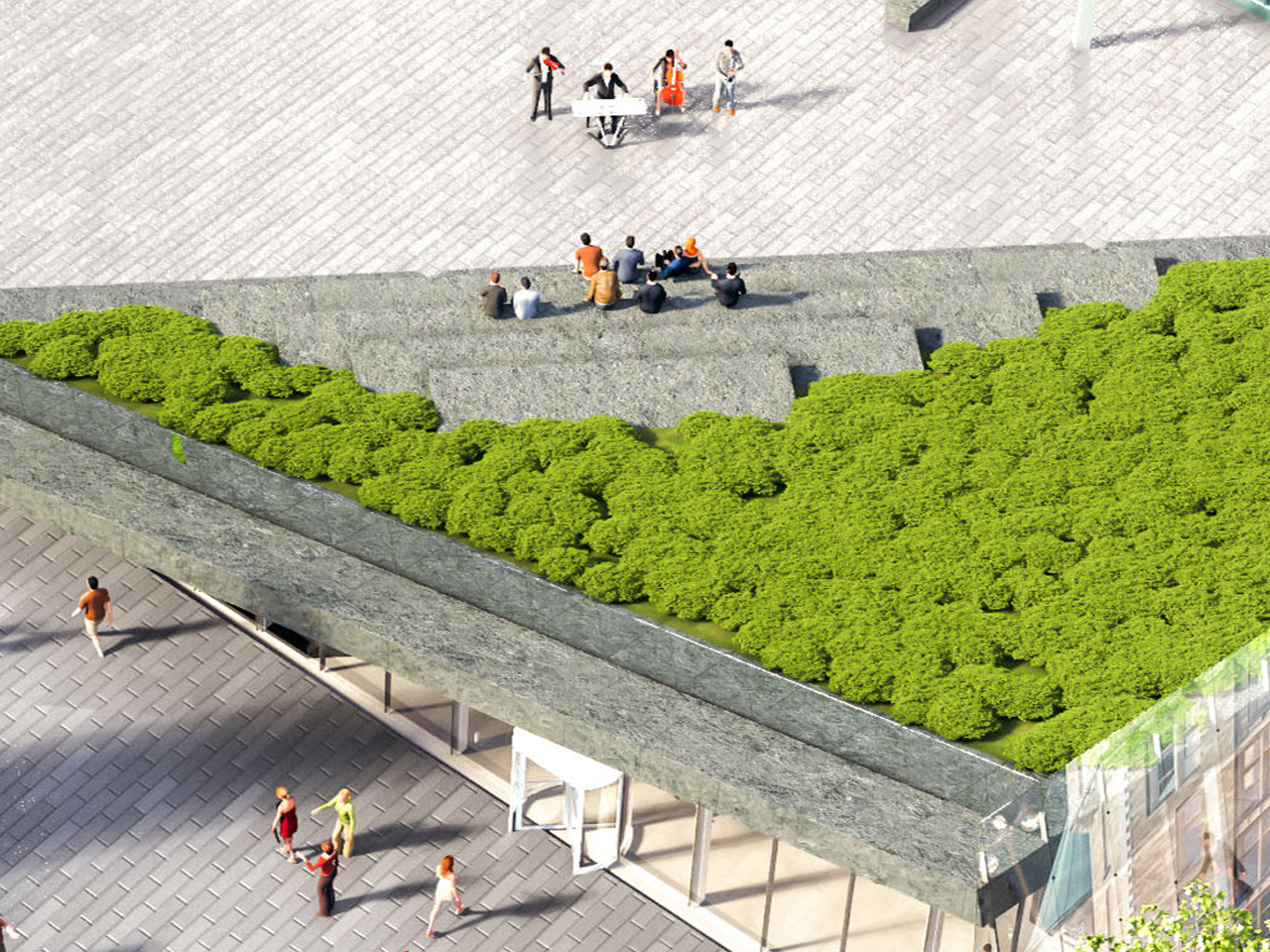What the heck is that thing?
The “thing” looming over Bank Street, summer 2015.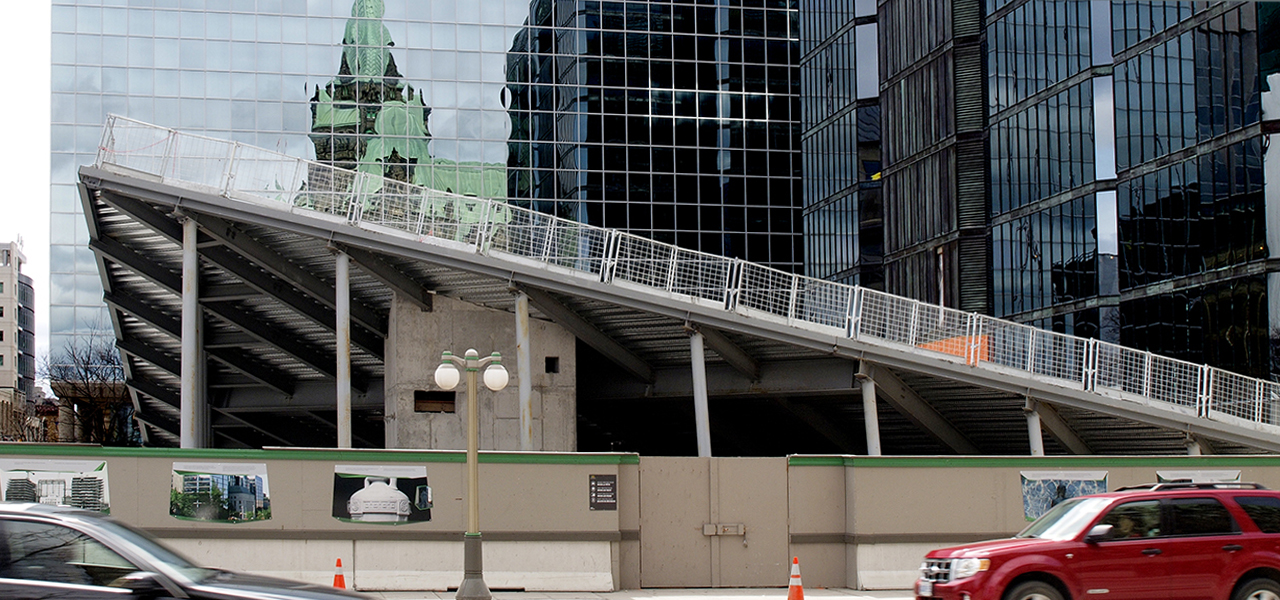
Anybody wandering past the Bank of Canada’s Ottawa head office cannot be blamed for staring at the curious structure looming over Bank Street and wondering “What the heck is that thing?”
Good question.
In an Ottawa Sun article from July 2015, reporter Keaton Robbins asked a similar question of a number of passers by on Bank Street. Apparently only one of them answered correctly. Some people thought it was a parking garage, others a monument, public art or a train station. A popular guess was a skateboard park but the most common response was some variant of “I have absolutely no idea.”
It seems a pretty strange building but now it has a solid roof, glass walls and doors. Doors? Ah, there’s your clue. It’s no skateboard park—it’s the entrance pyramid for the Bank of Canada Museum.
For all of us at the Museum, that entrance is a very big deal. For 30 years, the Currency Museum lived quietly in the back of the Bank’s original head office building. Problem was, the Museum was invisible from the street. The Museum’s current Director admits that the first time he found the Currency Museum it was by complete accident. In fact, one of the ways the Museum was typically described in those days was as a “hidden gem.”
Well, we’re done hiding. The Museum team is very pleased to have a big, bright street-level entrance that will make the Museum a prominent feature of one of Canada’s most popular tourist districts. Anybody “stumbling upon” the Bank of Canada Museum will have to stumble into an enormous wall of glass and steel—so please, do take care.
The Museum pyramid has another purpose, to act as a skylight for the warm and welcoming reception area beneath it. With the sunlit stairs and the broad view of the skyline provided by the glass portico, there will be little sense of being below ground. In terms of design, we are in good company with other museum renovations such as that of Royal Ontario Museum’s Michael Lee-Chin Crystal and the Louvre Pyramid.
The portico roof is a green roof with public seating for events and outdoor lunching. 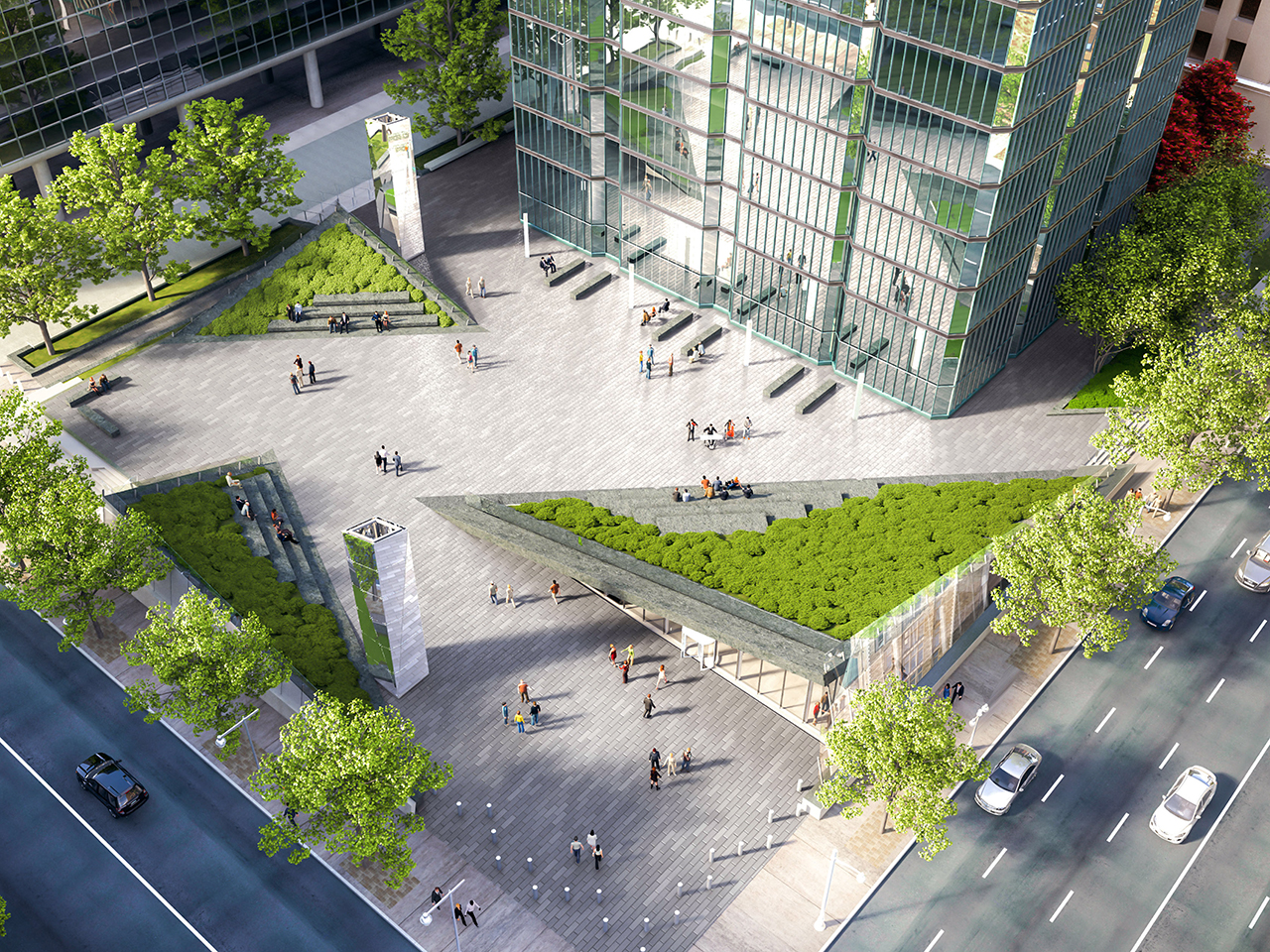
The Bank of Canada Plaza will continue to be a public gathering space and extension of the Sparks Street Mall. With the terraced seating on the green roof of the Museum pyramid, the plaza will be a better place than ever to share lunch with colleagues or enjoy the sunshine.
So when we re-open in 2017, we’ll invite you to have your lunch on the Bank of Canada Museum—literally.
The Museum Blog
Speculating on the piggy bank
By: Graham Iddon
New acquisitions—2024 edition
Money’s metaphors
Treaties, money and art
Rai: big money
By: Graham Iddon
Lessons from the Great Depression
By: Graham Iddon
Welcoming Newfoundland to Canada
By: David Bergeron
